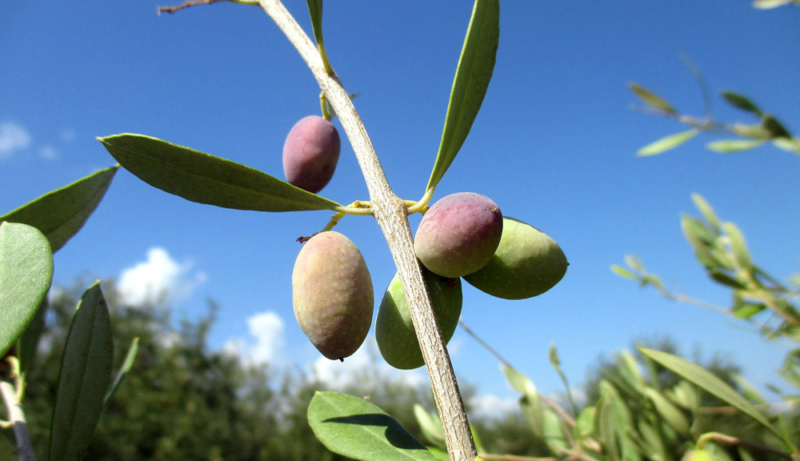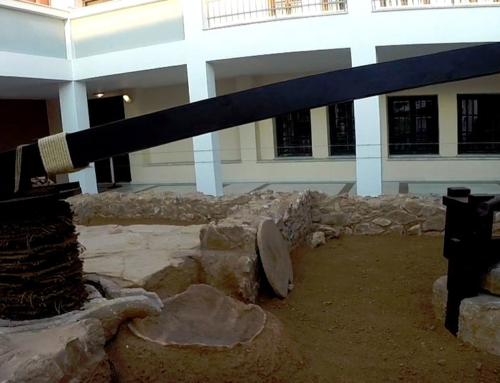Panayotis Karantonis, an International Olive Council advisory committee member and director of the Hellenic Association of Industries & Packers of Olive Oil (ESVITE), tells Olive Oil Times that recent estimates for the upcoming olive harvest in Greece call for lower yields than last year. “Due to adverse weather conditions, mainly in Crete, and the extensive presence of the olive fly, the new production is estimated to be less than 250,000 metric tons” of olive oil.
Nikos Michelakis, scientific advisor of the Association of Cretan Olive Municipalities (ACOM or SEDIK), also suggests that the Greek Ministry of Rural Development and Food’s estimate of 300,000 metric tons of olive oil is likely to be too high this year. Because of the damage “from extreme weather conditions such as an unusual heatwave in spring, particularly in Crete, and from very little rainfall,” Greece may produce as little as 200,000 metric tons of olive oil this year.
As the earliest olive harvests begin in Halkidiki, northern Greece, most of the 18 producers who responded to an Olive Oil Times questionnaire seem to expect approximately 200,000 to 250,000 metric tons of olive oil production this year. Producers are anticipating a smaller harvest in some parts of the Peloponnese, most of Crete, and central Greece, while they sent mixed reports from Lesvos and indefinite answers regarding olive oil from Halkidiki.
ESVITE’s Karantonis suggests that while “exports of Greek olive oil during the current crop year (2015/16) are estimated in the area of 140,000 metric tons, the first estimate for the new crop year’s exports is just 110,000 tons.” Karantonis adds that in Greece the remaining olive oil “stocks at the end of the current crop year (2015/16) are estimated around 50,000 tons.”
Karantonis points out that “prices for fresh oils which are expected in the market by mid-October will be, as always, decisively affected by the interest to be expressed by Italian traders and importers.” Michelakis also notes that is difficult to predict prices, since they “will depend largely on the production and the prices in the main oil producing countries, Spain and Italy.” If current forecasts for production are correct, he says, prices may remain stable, at least until the beginning of the harvest.
Peloponnese
Michalis Pachnos of Arbor Beata expects a good harvest from his grove in Corinth (NE Peloponnese) but says “prolonged summer heat and low rainfalls have resulted in ‘stressed’ olive groves that will have limited productivity in 2016.”
A bit southwest in Mycenae, Ioannis Kampouris of E-LA-WON anticipates “a good year with high quality olive oil” and similar quantities to last year, given few weather problems there and adequate non-governmental control of the olive fly.
Tasos Anestis of Rhizoma Olive Farms in Kranidi (E Peloponnese) predicts that the harvest in his area “will be exceptional, but the quantity will be considerably less” due to extremely hot, dry conditions in spring that affected the local Manaki variety, but not the Koroneiki.
Nikos Charamis of KASELL anticipates a “moderate to good” quantity in Lakonia (SE Peloponnese) due to irrigation and little damage to olive trees during recent storms.
Maria Guadagno Katsetos of Loutraki Oil Company (S Peloponnese) expects a “good harvest year” with excellent quality thanks to no problems.
Giovanni Bianchi of Argali (SW Peloponnese) predicts a good harvest, although “the weather has greatly favored the proliferation of the olive fly,” and strong rainstorms damaged other (non-olive) crops in his area.
George Mathiopoulos of the Greek Olive Estate predicts a very good quality harvest, perhaps 10% less than last year, in Gortynia (central Peloponnese).
Crete
SEDIK’s Nikos Michelakis explains that “in Crete, where average production is close to 100,000 tons, the coming crop is estimated to be less than 60,000 tons, and even lower if the fight against the olive fruit fly that started very late this year does not have a good result.” Some parts of Crete were harder hit than others by this year’s hot winds, heat, and drought. For example, Eftychios Androulakis of Pamako fears the smallest crop in a decade in mountainous Selino, southwest Crete, with medium quality due to olive fly damage.
Emmanouil Karpadakis of Terra Creta expects a slightly smaller harvest than last year in the Kolymvari area of northwest Crete. Creta Earth owner Giorgos Papadakis reports that the Plakias area in south central Crete had little trouble with hot winds or drought, since it is watered by mountain springs, so he expects a fairly good harvest, although less than last year.
Lesvos
In Lesvos, Agrocapital reports, “the climate favored the development of the olive fly, and this will have an adverse impact on both the quantity and quality of olive oil production this year.”
Ellie Tragakes of Hellenic Agricultural Enterprises has noticed some olive fly issues but anticipates a similar harvest to previous years in her groves.
On the other hand, Stratis Camatsos of evo3 estimates “a super-harvesting season, one that we haven’t seen for the last 4-5 years,” with the same “low acidity and aromatic flavors as usual.” Although the summer was dry and some “strong winds have broken some branches…the biggest threat right now is the olive fruit fly,” which they are “monitoring very closely” in order to decide whether to start harvesting early to avoid damage to olives.
Halkidiki and Central Greece
Argyris Bouras of Eleones Hellenic Olive Products expects the harvest in Halkidiki to be “smaller than last year,” but with similar quality. Recent rains have largely compensated for an earlier drought. “The drought will leave the olives a bit smaller than other years, which is good news for olive oil because the smaller olives are used for making olive oil” rather than for table olives.
Evi Psounou Prodromou of Yanni’s Olive Grove agrees that Halkidiki will have very good quality but smaller olives, adding that the table olive price will largely determine how many olives are kept for pressing, and how many sold as table olives. If table olives sell for a high price, fewer olives will be available for pressing, and vice versa.
Business development consultant Stamatis Alamaniotis explains that some of the larger Greek olive varieties, such as Amfissa (Amphissis) and Halkidiki olives, are used for double direction cultivation (both as table olives and for oil), unlike smaller olives such as Koroneiki and Manaki.
In central Greece, Alamaniotis expects a very high quality olive crop with about 70% less quantity than average. There was some damage from the olive fly and the olive moth, but not too much so far, given the drought.
As Tasos Anestis mentions, “the global consumption of real extra virgin olive oil is constantly increasing, and this can only be good news,” as it “represents a tendency on behalf of consumers to a more healthy diet full of antioxidants and anti-inflammatory” foods. This suggests that increasing numbers of consumers will be hoping for a good harvest.
Source (image and post) : https://www.oliveoiltimes.com/olive-oil-business/europe/greek-farmers-expect-lower-yields-harvest-nears/52985



